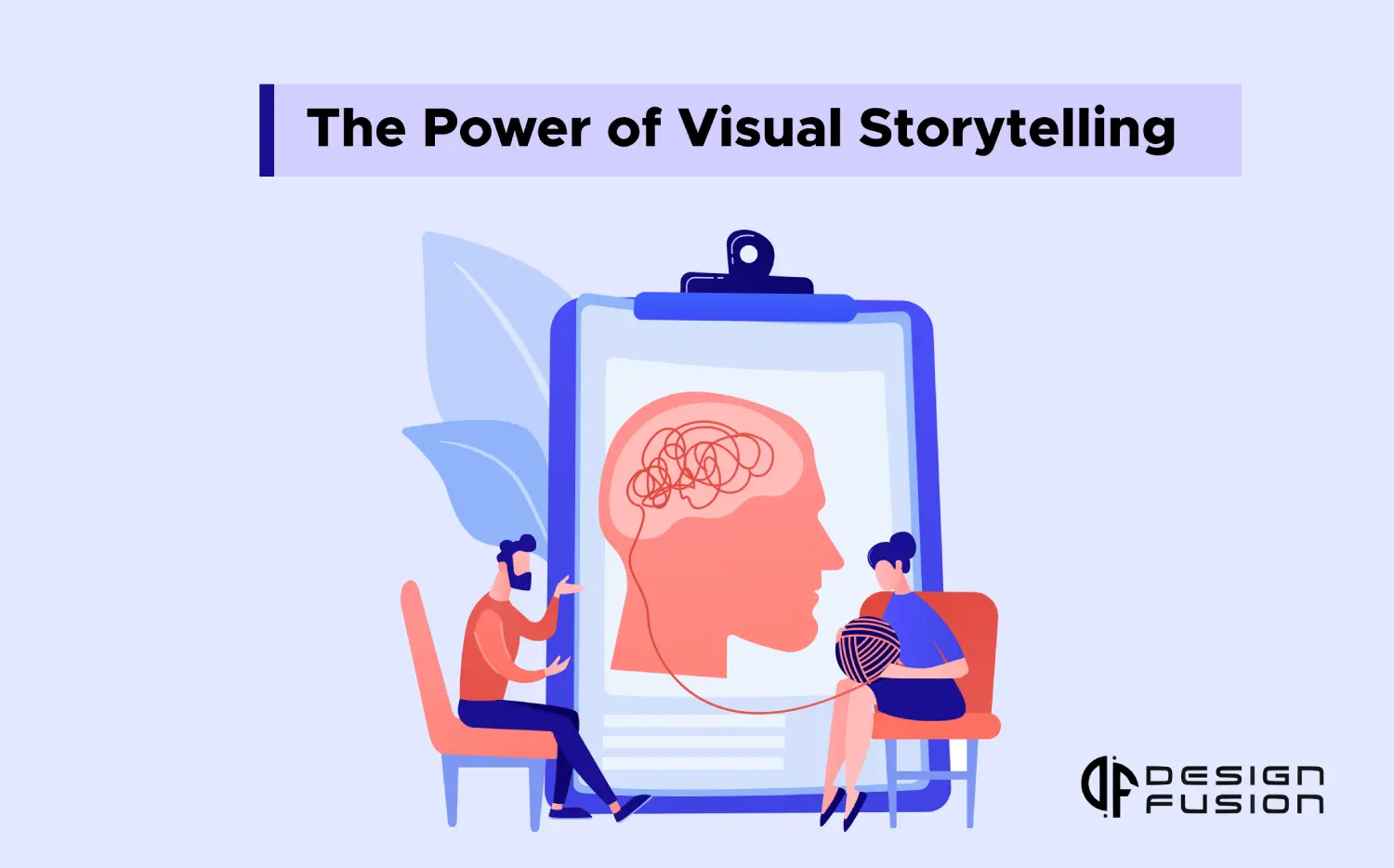In the age of information overload, capturing your audience’s attention and holding it is no small feat. As businesses and brands fight for the same digital real estate, the need to stand out and connect with your audience has never been more crucial. In this digital landscape, the power of visual storytelling through design emerges as a compelling strategy to not only captivate your audience but also leave a lasting impression.
The Primacy of Visual Content
Our brains are wired to process visual information more rapidly and efficiently than text. According to a report by HubSpot, content with relevant images gets 94% more views than content without visuals. This innate preference for visual content is why visual storytelling becomes a potent tool for engaging your audience.
Visual storytelling leverages the emotional and psychological impact of visuals to convey narratives, evoke emotions, and build connections. When skillfully executed, it can transcend language and cultural barriers, making it universally relatable.
Before jumping into details, let’s briefly first discuss what storytelling is.
Storytelling is the art of conveying a narrative or a sequence of events through words, visuals, or other mediums to engage an audience and evoke emotions or understanding. It involves the use of characters, settings, plotlines, and themes to create a compelling and memorable tale. Storytelling is not limited to written or spoken words; it can also encompass visual elements, such as images, videos, and graphics. Effective storytelling often has a purpose, whether it’s to entertain, inform, persuade, or inspire, and it is a powerful tool for conveying messages and connecting with others on a deeper level.
Designing a Visual Narrative
Effective visual storytelling doesn’t just happen; it’s a deliberate process that requires thoughtful design. Here’s how you can harness the power of visual storytelling to engage your audience:
Define Your Story
Before diving into design, outline the core message you want to convey. What story are you telling? What emotions or reactions do you want to elicit from your audience? Having a clear narrative in mind sets the stage for your visual journey.
Visual Consistency
Visual consistency is a fundamental principle in design that involves maintaining uniformity in the visual elements of a brand. It’s about creating a cohesive and recognizable identity through the consistent use of colours, typography, imagery, and design elements. When applied effectively, visual consistency helps build brand recognition, instils trust, and enhances the overall user experience. Whether it’s a website, marketing collateral, or a product, adhering to a well-defined visual identity ensures that every interaction with the brand feels familiar and reinforces the brand’s message. Visual consistency not only aids in conveying professionalism but also plays a vital role in creating a lasting impression in the minds of the audience.
Use Compelling Imagery
Utilizing compelling imagery is an essential aspect of effective communication and design. When we employ captivating visuals, such as striking photographs, eye-catching graphics, or emotionally resonant illustrations, we have the power to profoundly impact our audience. Compelling imagery doesn’t merely decorate content; it serves as a powerful storytelling tool, evoking emotions, conveying complex ideas, and drawing viewers into the narrative. Whether it’s an advertisement, a presentation, or a website, compelling imagery is the key to capturing attention and leaving a lasting impression. It transcends language barriers and communicates on a visceral level, making it an indispensable asset in the world of design and communication.
Simplicity in Design
Simplicity in design is a guiding principle that emphasizes clarity, minimalism, and elegance in visual communication. It involves the deliberate reduction of complexity to create a clean and uncluttered design that effectively conveys its intended message. Simple design is not merely about aesthetic appeal; it’s about enhancing user understanding and experience. By eliminating unnecessary elements, simplifying layouts, and using a restrained colour palette, simplicity makes it easier for audiences to navigate, comprehend, and engage with the content. This principle is particularly relevant in web and user interface design, where intuitive and straightforward interfaces often lead to better usability and user satisfaction. Simplicity in design is a powerful tool that ensures the focus remains on the core message or functionality, resulting in a more impactful and enjoyable visual experience.
Storyboard Your Content
Storyboarding your content is a critical step in the creative process, especially for visual storytelling. It involves creating a visual outline or a series of sketches that lay out the structure and sequence of your narrative or project. Storyboarding is not limited to film or animation; it can be applied to presentations, websites, advertisements, and various other mediums.
Storyboarding serves as a roadmap for your project, making it easier to collaborate with team members, designers, or illustrators. It provides a visual reference that helps ensure everyone is aligned on the project’s direction and vision.
Embrace Diversity
Incorporate diverse visuals that reflect a broad range of experiences and perspectives. This not only makes your storytelling more inclusive but also resonates with a wider audience.
Interactive Elements
Engage your audience further by incorporating interactive elements such as infographics, animations, or clickable content. Interactivity increases engagement and time spent on your content.
Call to Action (CTA):
Always include a clear CTA that guides your audience on the desired next step. CTAs are vital for conversion and engagement because they provide a clear path for the audience to follow, driving them toward desired outcomes. Whether the goal is to make a sale, gather leads, or encourage further exploration of content, a compelling CTA can significantly impact the success of a marketing or communication campaign.
Real-World Examples
Several brands have successfully harnessed the power of visual storytelling to engage their audiences. Airbnb’s ‘Experiences’ section, for instance, uses immersive imagery and user-generated content to transport visitors to different destinations and experiences. Similarly, National Geographic’s Instagram account tells captivating stories through breathtaking photography and captions that inform and inspire.
Conclusion
In conclusion, the power of visual storytelling in design cannot be overstated. It is a dynamic and influential tool for engaging your audience, conveying your message, and leaving a lasting impact. By understanding the psychology of visuals, maintaining visual consistency, and crafting compelling narratives, you can harness this power to connect with your audience on a deeper level, fostering trust and loyalty in a crowded digital landscape. Remember, in the world of visual storytelling, a picture is worth far more than a thousand words—it’s worth the attention and affinity of your audience.


